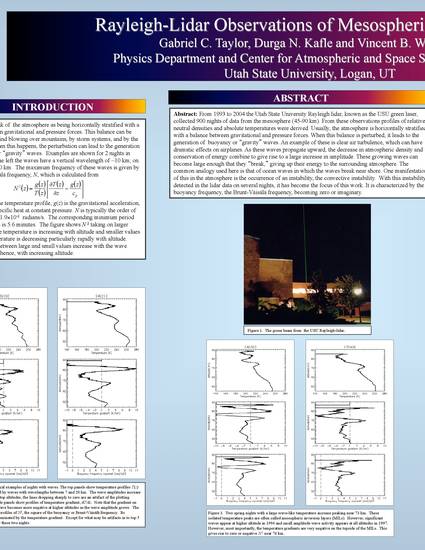
From 1993 to 2004 the Utah State University Rayleigh lidar, known as the USU green laser, collected 900 nights of data from the mesosphere (45-90 km). From these observations profiles of relative neutral densities and absolute temperatures were derived. Usually, the atmosphere is horizontally stratified with a balance between gravitational and pressure forces. When this balance is perturbed, it leads to the generation of buoyancy or “gravity” waves. An example of these is clear air turbulence, which can have dramatic effects on airplanes. As these waves propagate upward, the decrease in atmospheric density and conservation of energy combine to give rise to a large increase in amplitude. These growing waves can become large enough that they “break,” giving up their energy to the surrounding atmosphere. The common analogy used here is that of ocean waves in which the waves break near shore. One manifestation of this in the atmosphere is the occurrence of an instability, the convective instability. With this instability detected in the lidar data on several nights, it has become the focus of this work. It is characterized by the buoyancy frequency, the Brunt-Väisälä frequency, becoming zero or imaginary.

Presented at the SPS Meeting, Salt Lake City, UT. PDF of poster is available for download through link above.